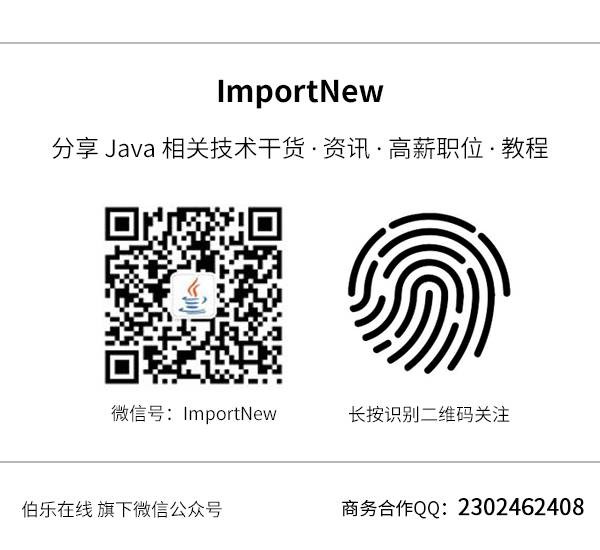(點選上方公眾號,可快速關註)
來源:王潔 ,
imaidata.github.io/blog/2017/07/29/java結合keytool實現非對稱簽名與驗證/
keytool的使用
keytool 是 JDK 自帶的一個金鑰庫管理工具。這裡只用到了 keytool 的部分功能,包括生成金鑰對、匯出公鑰等。keytool 生成的公鑰/私鑰對存放到一個到了一個檔案中,這個檔案有密碼保護,通稱為 keystore。
生成金鑰對
$ keytool -genkey -alias signLegal -keystore examplestanstore -validity 1800
生成別名為 signLegal 的金鑰對,存放在金鑰庫 examplestanstore 中,證書的有效期是1800天(預設是90天)。
輸入一系列的引數。輸入的引數遵循了 LDAP 的風格和標準。可以想象,生成的金鑰對可以看成 LDAP 的一個條目。
命令執行成功後會在當前目錄下建立一個叫 examplestanstore 的檔案。
檢視金鑰對
$ keytool -list -keystore examplestanstore -v
列出了examplestanstore金鑰庫的中所有金鑰對。-v引數表示詳細資訊,詳細資訊中有證書的失效時間。
匯出公鑰證書
$ keytool -export -keystore examplestanstore -alias signLegal -file StanSmith.cer
匯出的公鑰存放在當前目錄的 StanSmith.cer 檔案中,是個二進位制檔案。
Java簽名和驗證
參考了Java安全官方教程。
http://docs.oracle.com/javase/tutorial/security/apisign/index.html
在該官方教程中,GenSig.java 類生成金鑰對,對輸入的檔案進行簽名,輸出了一個簽名結果檔案 sig 和公鑰 suepk。
VerSig.java 類接受三個引數:公鑰檔案名(suepk)、簽名檔案(sig)、被簽名的源檔案名(hello.txt)。
該教程解釋了兩個類的原理,並附加有原始碼。將原始碼下載並編譯。建立一個 hello.txt 的檔案作為被簽名的標的檔案,裡面隨便放點字串。然後執行:
$ java GenSig hello.txt (生成檔案sig和suepk)
$ java VerSig suepk sig hello.txt
signature verifies: true
在實際使用時,金鑰對不可能每次在程式中重新生成。而 keytool 恰好可以生成並相對安全儲存金鑰對。所以下麵結合了 keytool 和 Java 實現的功能。
結合keytool與Java簽名/驗證
參考”Oracle–The Java Tutorials: Weaknesses and Alternatives”
http://docs.oracle.com/javase/tutorial/security/apisign/enhancements.html
金鑰對由 keytool 生成並儲存到 keystore 中保護起來(keystore有密碼)。公鑰也從 keystore 中匯出。GenSig.java 類只需要從 keystore 中取得私鑰進行簽名即可。
VerSig.java 也要做適當的修改。貌似因為從 keystore 中匯出的是證書而不是公鑰,兩者的封裝格式估計有差異。
具體步驟
-
利用 keytool -genkey 生成金鑰對儲存在 keystore 中(庫檔案是examplestanstore);
-
利用 `keytool -export` 從 keystore 中匯出公鑰證書(StanSmith.cer);
-
利用新類 GenSig2.java 生成簽名(檔案名是sig),GenSig2.java 會從 keystore 中取私鑰;
-
將公鑰(StanSmith.cer)、簽名(sig)、被簽名檔案(hello.txt)發給驗證方;
-
驗證方利用 VerSig2.java 進行驗證。
下麵是 GenSig2.java 和 VerSig2.java 的原始碼和執行方式。
GenSig2.java
import java.io.*;
import java.security.*;
class GenSig2 {
public static void main(String[] args) {
if (args.length != 1) {
System.out.println(“Usage: java GenSig2
“); }
else try{
/*create key paire use keytool:
$ keytool -genkey -alias signLegal -keystore examplestanstore -validity 1800*/
// read keystore file
KeyStore ks = KeyStore.getInstance(“JKS”);
FileInputStream ksfis = new FileInputStream(“examplestanstore”);
BufferedInputStream ksbufin = new BufferedInputStream(ksfis);
// open keystore and get private key
// alias is ‘signLeal’, kpasswd/spasswd is ‘vagrant’
ks.load(ksbufin, “vagrant”.toCharArray());
PrivateKey priv = (PrivateKey) ks.getKey(“signLegal”, “vagrant”.toCharArray());
/* Create a Signature object and initialize it with the private key */
Signature dsa = Signature.getInstance(“SHA1withDSA”, “SUN”);
dsa.initSign(priv);
/* Update and sign the data */
FileInputStream fis = new FileInputStream(args[0]);
BufferedInputStream bufin = new BufferedInputStream(fis);
byte[] buffer = new byte[1024];
int len;
while (bufin.available() != 0) {
len = bufin.read(buffer);
dsa.update(buffer, 0, len);
};
bufin.close();
/* Now that all the data to be signed has been read in,
generate a signature for it */
byte[] realSig = dsa.sign();
/* Save the signature in a file */
FileOutputStream sigfos = new FileOutputStream(“sig”);
sigfos.write(realSig);
sigfos.close();
/* public key file can export from keystore use keytool:
$ keytool -export -keystore examplestanstore -alias signLegal -file StanSmith.cer */
} catch (Exception e) {
System.err.println(“Caught exception ” + e.toString());
}
};
編譯後,這樣執行:
$ java GenSig2 hello.txt
會生成簽名檔案sig。
VerSig2.java
import java.io.*;
import java.security.*;
import java.security.spec.*;
class VerSig2 {
public static void main(String[] args) {
/* Verify a DSA signature */
if (args.length != 3) {
System.out.println(“Usage: VerSig publickeyfile signaturefile datafile”);
}
else try{
/* import encoded public cert */
FileInputStream certfis = new FileInputStream(args[0]);
java.security.cert.CertificateFactory cf =
java.security.cert.CertificateFactory.getInstance(“X.509”);
java.security.cert.Certificate cert = cf.generateCertificate(certfis);
PublicKey pubKey = cert.getPublicKey();
/* input the signature bytes */
FileInputStream sigfis = new FileInputStream(args[1]);
byte[] sigToVerify = new byte[sigfis.available()];
sigfis.read(sigToVerify );
sigfis.close();
/* create a Signature object and initialize it with the public key */
Signature sig = Signature.getInstance(“SHA1withDSA”, “SUN”);
sig.initVerify(pubKey);
/* Update and verify the data */
FileInputStream datafis = new FileInputStream(args[2]);
BufferedInputStream bufin = new BufferedInputStream(datafis);
byte[] buffer = new byte[1024];
int len;
while (bufin.available() != 0) {
len = bufin.read(buffer);
sig.update(buffer, 0, len);
};
bufin.close();
boolean verifies = sig.verify(sigToVerify);
System.out.println(“signature verifies: ” + verifies);
} catch (Exception e) {
System.err.println(“Caught exception ” + e.toString());
};
}
}
編譯後,這樣執行(StanSmith.cer 是利用 keytool 匯出的公鑰證書,見前文):
$ java VerSig2 StanSmith.cer sig hello.txt
signature verifies: true
OpenSSL
雖然也研究了一下 OpenSSL,但發現與 Java 難以結合,難度也很大。例如它的教程中採用的是 RSA,而上面的 Java 使用的是 DSA。所以只是貼在這裡備忘,可以忽略。
參考”An Introduction to the OpenSSL command line tool”
http://users.dcc.uchile.cl/~pcamacho/tutorial/crypto/openssl/openssl_intro.html
生成私鑰
$ openssl genrsa -out key.pem 1024
$ cat key.pem
—–BEGIN RSA PRIVATE KEY—–
MIICXQIBAAKBgQCzVDmu6Cf2QF7cERCGYU3B8Epm6pkkpMZFgotphXMgAmBBNJbh
Si7qPH4R5JlEm1ZXPr5DZH/pyJBWQhiiHGeUAOve+GOgvt9Rk25r7OEWYvn/GCr/
JBfLBGqwtlzn/t2s2x04IooshsGkOd6YpZoztkEDtu2gKHedFczF607IvwIDAQAB
AoGAMdbIqUmwQYomUvcTJqXIXIwRwYSVx09cI1lisZL7Kfw/ECAzhq19WHAzgXmM
9zpMxraTXluCCVFKfA6mlfda+ZoBlKSYdOecwNB+TSAumf9XK8uHW/g8C+Ykq9OG
g9Uiy8rKnl12Zaiu9H8L82ud0CkTFW2636/PuKgtp+4YbXECQQDhKdh8lwgumg7H
YIw5476QOHnPL7c3OFPGtaOZMZJkjMPfRzgR4B5PjcGnOLDoTlkATcBPmXtLwwJJ
SzaBdaRjAkEAy+NwdOzC1yQrTrkZQx1brNjO3iytfkl3t1xAWyz5Sy1IB7+4fsod
Eh3br5E1o5YRipY2GJZvp2OAAt3tz6iS9QJASvIYwu+qo4hX3vk9847gwTRrJxFk
1JaFHCEdgUJEzf8ku08DVL/alvRCPxzZlZluenFmz5fwuDkCq87DJ7g2rQJBAMDM
+SnIPdMeA8n0pRvfJjLD7pMP4pu6M3fzx3Owiqj5T9TsCjXzQBxCmdxizzs7DKll
tA/6Kek64PFVFa25tgUCQQCTM1VwfNKjFbd+0HuF6WAs3Odjuo0gKk/QIjdn7M5/
I0kxEApKxTto3oiuCQGeYL/sqy3WjM0476w48+xUsQeF
—–END RSA PRIVATE KEY—–
匯出公鑰
$ openssl rsa -in key.pem -pubout -out pub-key.pem
$ cat pub-key.pem
—–BEGIN PUBLIC KEY—–
MIGfMA0GCSqGSIb3DQEBAQUAA4GNADCBiQKBgQCzVDmu6Cf2QF7cERCGYU3B8Epm
6pkkpMZFgotphXMgAmBBNJbhSi7qPH4R5JlEm1ZXPr5DZH/pyJBWQhiiHGeUAOve
+GOgvt9Rk25r7OEWYvn/GCr/JBfLBGqwtlzn/t2s2x04IooshsGkOd6YpZoztkED
tu2gKHedFczF607IvwIDAQAB
—–END PUBLIC KEY—–
摘要計算
建立一個內容是 1234 的文字檔案 hello.txt。用 OpenSSL 計算它的 SHA256 摘要(SHA256 是 jarsigner 的預設摘要演演算法):
$ cat hello.txt
1234
$ openssl dgst -SHA256 -out hello.sha256 hello.txt
$ cat hello.sha256
SHA256(hello.txt)= a883dafc480d466ee04e0d6da986bd78eb1fdd2178d04693723da3a8f95d42f4
簽名和驗證
對摘要檔案 hello.sha256 進行簽名:
$ openssl rsautl -sign -in hello.sha256 -out hello.sign -inkey key.pem
用公鑰對簽名進行驗證:
$ openssl rsautl -verify -in hello.sign -inkey pub-key.pem -pubin
SHA256(hello.txt)= a883dafc480d466ee04e0d6da986bd78eb1fdd2178d04693723da3a8f95d42f4
用公鑰驗證必須加上 -pubin 引數。 用私鑰對簽名進行驗證:
$ openssl rsautl -verify -in hello.sign -inkey key.pem
SHA256(hello.txt)= a883dafc480d466ee04e0d6da986bd78eb1fdd2178d04693723da3a8f95d42f4
驗證的STD輸出與摘要檔案 hello.sha256 的內容一樣,說明驗證可以透過。
【關於投稿】
如果大家有原創好文投稿,請直接給公號傳送留言。
① 留言格式:
【投稿】+《 文章標題》+ 文章連結
② 示例:
【投稿】《不要自稱是程式員,我十多年的 IT 職場總結》:http://blog.jobbole.com/94148/
③ 最後請附上您的個人簡介哈~
看完本文有收穫?請轉發分享給更多人
關註「ImportNew」,提升Java技能

 知識星球
知識星球